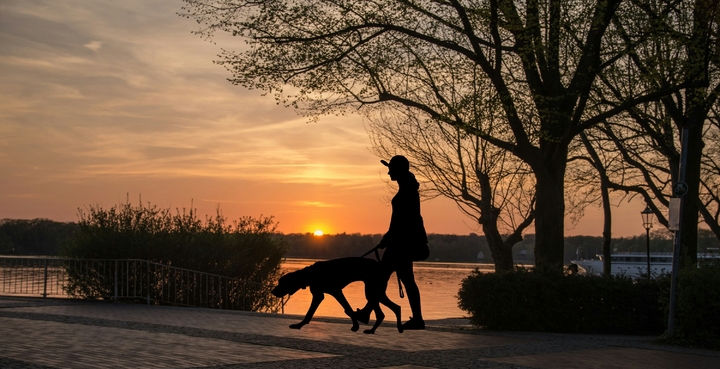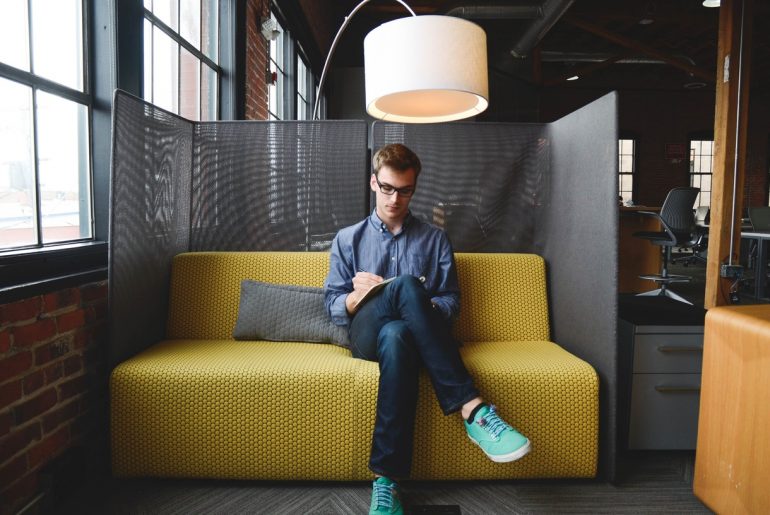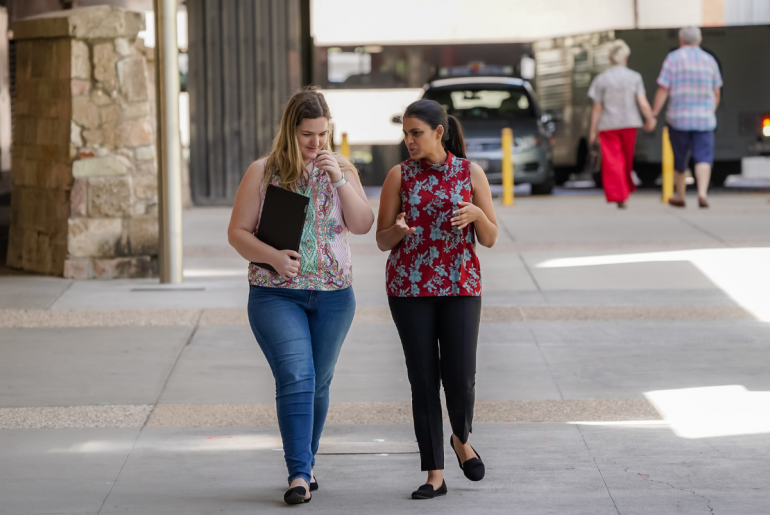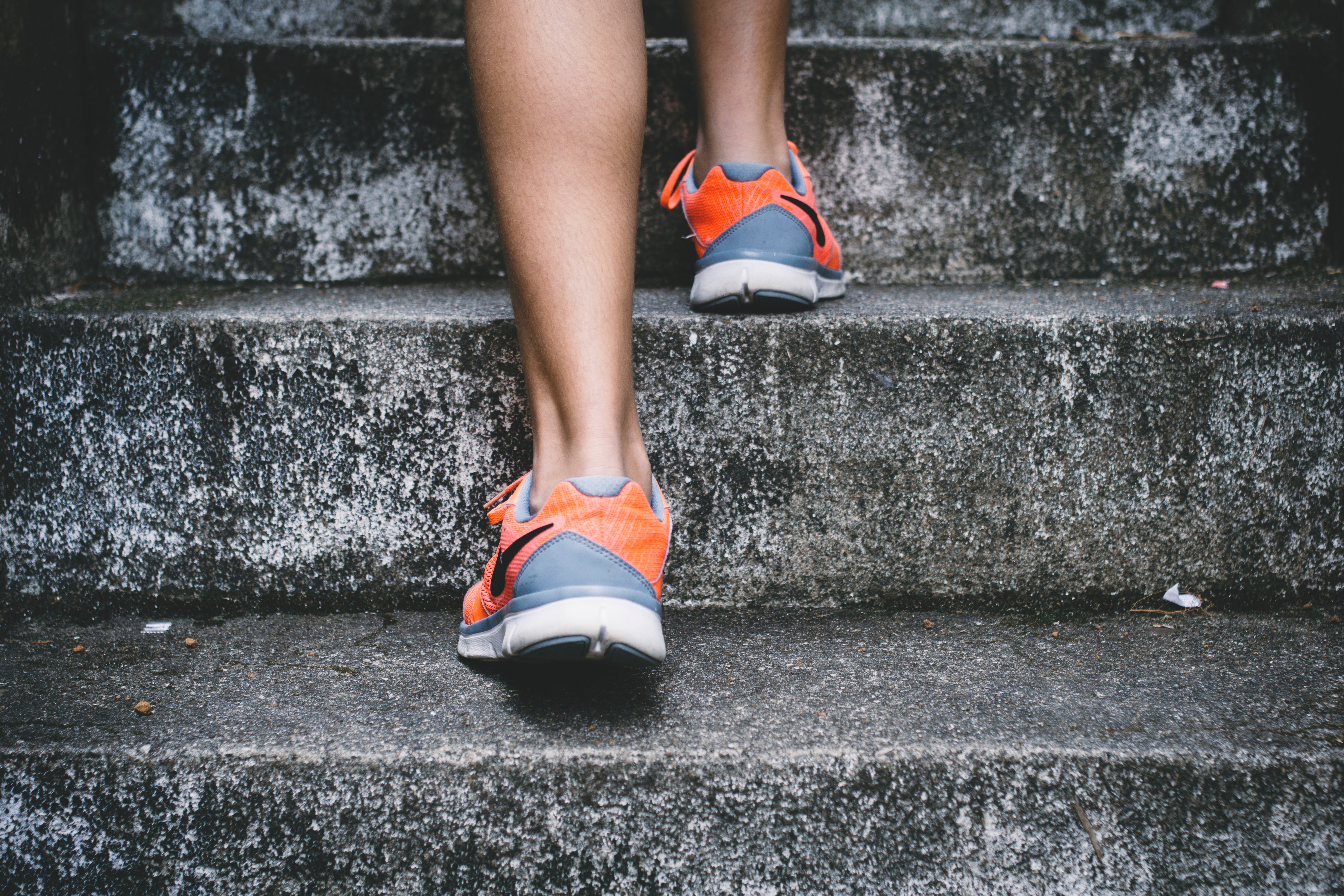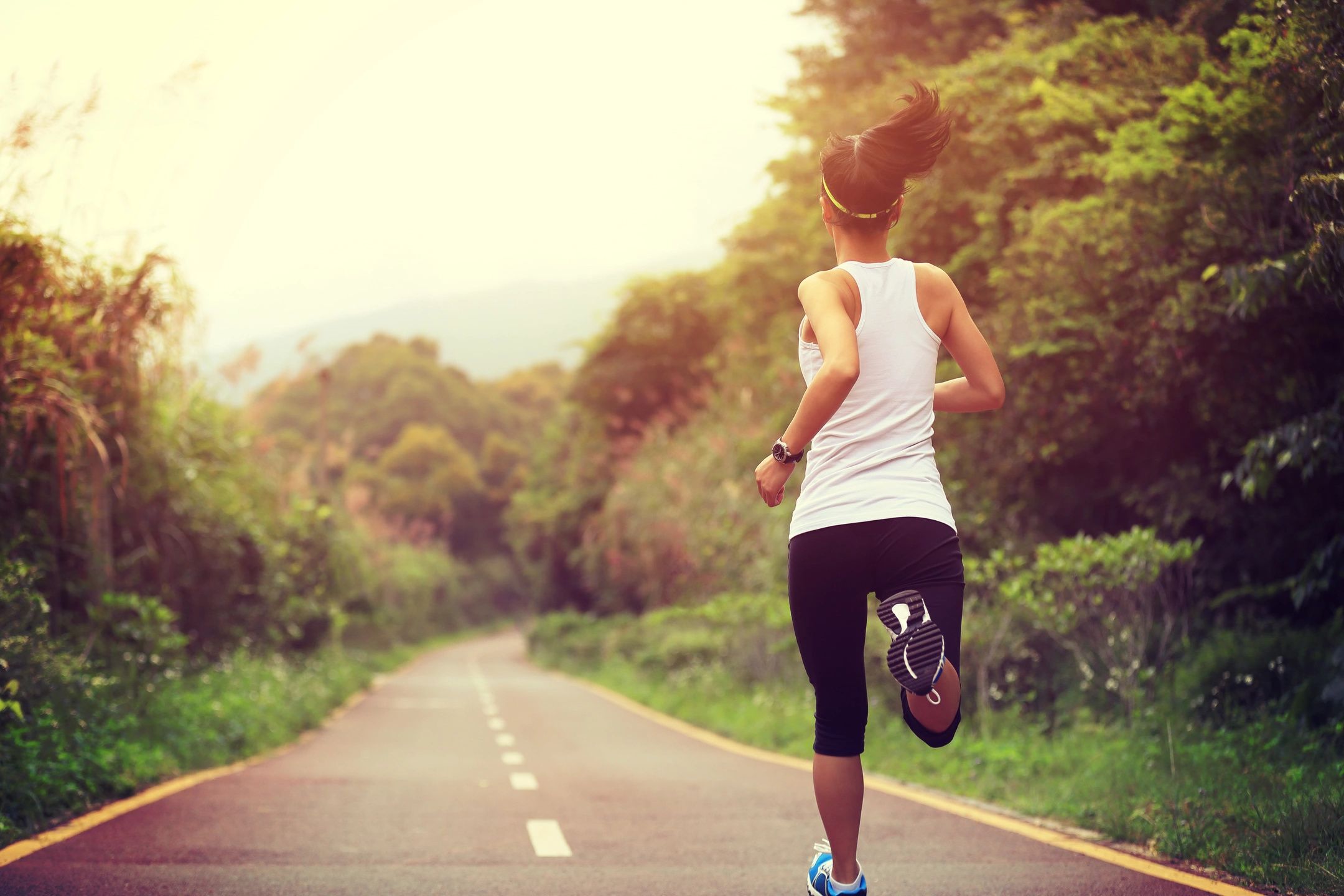The following article was written by Sophie O’Connell and published in Occupational Health and Wellbeing on the 7th June 2019. The modern world and the constant pursuit of technological growth have almost eliminated the need for movement in our daily lives. While commuting we sit in our cars or on the bus; at work we sit at our computers or in meetings; during our leisure time we sit watching TV, playing computer games or socialising with friends. Because of technology advancements we do not even need to leave the comfort of our own homes to socialise, stay in touch with friends and family, to shop, to work or even be entertained on a screen. This means that, on average, Brits spend around 9.5 hours a day spent sitting. Typically, the amount of time spent sedentary each day increases with age. In working-age adults much of this sitting is done at work. Evidence shows that office-based workers spend around 75% of their working day sitting, with a third of sitting time being done for a prolonged period. Many of us are guilty of spending time sitting for extended periods due to work, travel or various social commitments. But with the growing…
What Makes A Good Champion?
Are you interested in becoming a workplace champion? Maybe you are looking for someone to assume this role in your workplace but you are unsure where to start. You might ask yourself what makes a ‘good’ workplace champion? Previous research suggests that the most effective workplace champions are those who have a genuine passion for health and wellbeing and are enthusiastic about the opportunity to inspire others towards a healthier lifestyle (Healy et al., 2018). They must also be committed to making long-term positive health changes in their workplace and display a good relationship with their peers. It could be someone that has, or is eager to gain, some experience in managing similar projects. Health and safety representatives are often chosen for this position because it coincides with their goals, namely to create a safer, healthier workplace. However, we must also consider the individual’s capacity to adopt this role. Do they have the time and resources to engage fully with the program within the confines of their own job? Or will it fall into their periphery? These are just a few of the things that must be considered before electing a workplace champion. More general personality traits like outgoingness and…
Americans Are Sitting at Record Rates. Here’s Why That’s So Dangerous
The following article was written by Alice Park and was originally published by Time on April 23, 2019. Every day, we modern humans stay comfortably seated on our behinds for hours at a time: binge watching shows on Netflix, pecking away on keyboards at work, scrolling through social media feeds. But do people really sit more than they used to? That’s what Yin Cao and an international group of colleagues wanted to find out in their latest study published in JAMA. While studies on sitting behavior in specific groups of people — such as children or working adults with desk jobs — have recorded how sedentary people are, there is little data on how drastically sitting habits have changed over time. “We don’t know how these patterns have or have not changed in the past 15 years,” says Cao, as assistant professor in public health sciences at the Washington University School of Medicine. The researchers used data collected from 2001 to 2016 by the National Health and Nutrition Examination Survey (NHANES), which asked a representative sample of Americans ages five and older how many hours they spent watching TV or videos daily in the past month, and how many hours they spent…
How Much Do Sedentary People Really Need To Move? It’s Less Than You Think
The following article was originally posted by the Conversation on April 23, 2019 and was written by Emmanuel Stamatakis, Joanne Gale, and Melody Ding. People who spend much of their day sitting may need to move around less than we thought to counteract their sedentary lifestyle, new research shows. Our research, published today in the Journal of the American College of Cardiology, found about 20-40 minutes of physical activity a day seems to eliminate most health risks associated with sitting. That’s substantially lower than the one hour a day a previous study has found. We spend almost all our waking day sitting, standing, or moving. The health impact of each one of these can be complex. For example, too much standing can lead to lower back problems and even a higher risk of heart disease. But sitting for too long and not moving enough can harm our health. Then there are people who sit for many hours and also get in reasonable amounts of physical activity. For example, someone who has an office job but walks to and from work for 20 minutes each way and runs two to three times a week easily meets the recommended level of physical activity. While we know moving is better than…
Forget Standing Desks: To Stay Healthy, You’ve Got To Move All Day
The following article, written by Christopher Keyes, was published by The Guardian on February 6th, 2019. If you want to dedicate yourself to a lifetime of good habits, don’t start at the gym. Start at the office. A few years ago, James Levine, a doctor of endocrinology at the Mayo Clinic, sparked a radical change in America’s office furniture. His research had inspired a pile of viral stories cataloging the negative effects of sitting at a desk: leg muscles shut down, blood pressure increases, good cholesterol plummets, your children starve. OK, I made up that last one, but the real takeaway was no less dire. “Excessive sitting is a lethal activity,” Levine, who has studied sedentary behavior for nearly 20 years and is the most widely quoted expert on the topic, told the New York Times in 2011. And the solution – at least the one people heard – was to start standing. Cue the office makeovers. Over the next several years, workers all across America embraced stand-up desks. At Outside’s headquarters in Santa Fe, New Mexico, our building manager furiously reconfigured work spaces. Desks were removed from their shelving brackets, raised a foot and a half, and remounted. Walking the hallways,…
Sitting for More Than 13 Hours a Day May Sabotage the Benefits of Exercise
The following article, written by Gretchen Reynolds, was originally posted by the New York Times on April 10, 2019. Sitting for most of the day could make us resistant to the usual metabolic benefits of exercise, according to a small but worrying new study. The findings, in the Journal of Applied Physiology, suggest that inactivity may alter our bodies in ways that are not just unhealthy on their own but also blunt the healthfulness of exercise. We know, of course, that physical activity is good for us and being sedentary, for the most part, is not. Regular exercise reduces the risk of heart disease, Type 2 diabetes and many other chronic conditions. Even a single workout can improve our metabolisms, studies show, so that we burn fat more efficiently after meals and keep our blood sugar and insulin levels steady. Inactivity, meanwhile, has almost the opposite physiological effects. People who spend most of their waking hours sitting face heightened risks for many chronic diseases. They often also experience metabolic problems that raise the risk of diabetes and heart disease, including insulin resistance, poor blood sugar control and high levels of triglycerides, the fatty acids from food that linger in the blood…
Can sitting less decrease your risk of heart disease?
The following article, written by Gautam Ramesh, Andrea LaCroix, and John Bellettiere, was originally published on February 25, 2019 in The Conversation. You can read the original article here. Too much sitting has long been criticized for contributing to premature mortality, Type 2 diabetes, and a host of other illnesses. In a new study of 5,638 women, we looked at how sedentary behavior was related to future cardiovascular disease (CVD). The results showed that those who were most sedentary had the highest risk for having a future CVD event. We also found that women who most often interrupted their sedentary time to stand up and move had significantly lower risk for CVD than women who sat for long stretches of time without standing up. The results persisted even after accounting for other common factors linked with CVD such as age, overall health, blood pressure and cholesterol. CVD includes heart attacks, strokes, heart failure and other diseases concerning the heart and blood vessels. It is the leading cause of death in the U.S., accounting for 1 in 4 deaths annually. Our findings, along with the research discussed below, provides strong evidence that sitting too much is an important factor to consider for heart…
Discovery Interviews: What are they, why we are doing them, and what have we found?
The BeUpstanding™ team have recently been out and about talking to and interviewing champions, potential champions, teams, and workplaces about their experience of taking part in BeUpstanding. Today we are going to take a look at what discovery interviews are, what they are used for, and why we are doing them. Most importantly we are going to share some of the interesting things that we found. What are discovery interviews? Discovery interviews have one main purpose – and that is for the researcher (or product development team) to understand how the end user is actually using a product. In our case, they are giving us insights into why organisations and champions are taking up BeUpstanding, or why they might consider taking it up, as well as the barriers and facilitators to success. In this round of interviews, our discovery process has involved in-depth interviews with government departments, mining, and fast moving consumer goods (FMCG) companies, as well as on-site observations of work teams, both before and after putting BeUpstanding into practice. Over the past several months we have conducted numerous interviews. We deliberately chose teams with varying levels of engagement with BeUpstanding. We interviewed teams that were actively using the…
Health Check: do we really need to take 10,000 steps a day?
The following article, written by Corneel Vandelanotte, Kerry Mummery, Mitch Duncan, and Wendy Brown, was originally published in The Conversation on February 6th, 2019. You can read the original article here. Regular walking produces many health benefits, including reducing our risk of heart disease, type 2 diabetes and depression. Best of all, it’s free, we can do it anywhere and, for most of us, it’s relatively easy to fit into our daily routines. We often hear 10,000 as the golden number of steps to strive for in a day. But do we really need to take 10,000 steps a day? Not necessarily. This figure was originally popularised as part of a marketing campaign, and has been subject to some criticism. But if it gets you walking more, it might be a good goal to work towards. Where did 10,000 come from? The 10,000 steps concept was initially formulated in Japan in the lead-up to the 1964 Tokyo Olympics. There was no real evidence to support this target. Rather, it was a marketing strategy to sell step counters. There was very little interest in the idea until the turn of the century, when the concept was revisited by Australian health promotion researchers in 2001 to encourage people to be more active. Based on…
Global Action Plan on Reducing Physical Inactivity
The World Health Organisation (WHO) has recently released a Global Action Plan on physical activity with the aim of reducing physical inactivity by 10% by 2025, and by 15% by 2030. To support this goal they have developed 4 main objectives: Create active societies: “Create a paradigm shift in all of society by enhancing knowledge and understanding of, and appreciation for, the multiple benefits of regular physical activity, according to ability and at all ages.”1 Create active environments: “Create and maintain environments that promote and safeguard the rights of all people, of all ages, to have equitable access to safe places and spaces, in their cities and communities, in which to engage in regular physical activity, according to ability.”1 Create active people: “Create and promote access to opportunities and programmes, across multiple settings, to help people of all ages and abilities to engage in regular physical activity as individuals, families and communities.”1 Create active systems: “Create and strengthen leadership, governance, multisectoral partnerships, workforce capabilities, advocacy and information systems across sectors to achieve excellence in resource mobilization and implementation of coordinated international, national and subnational action to increase physical activity and reduce sedentary behaviour.”1 The reduction of sedentary behaviour is included in objective…




